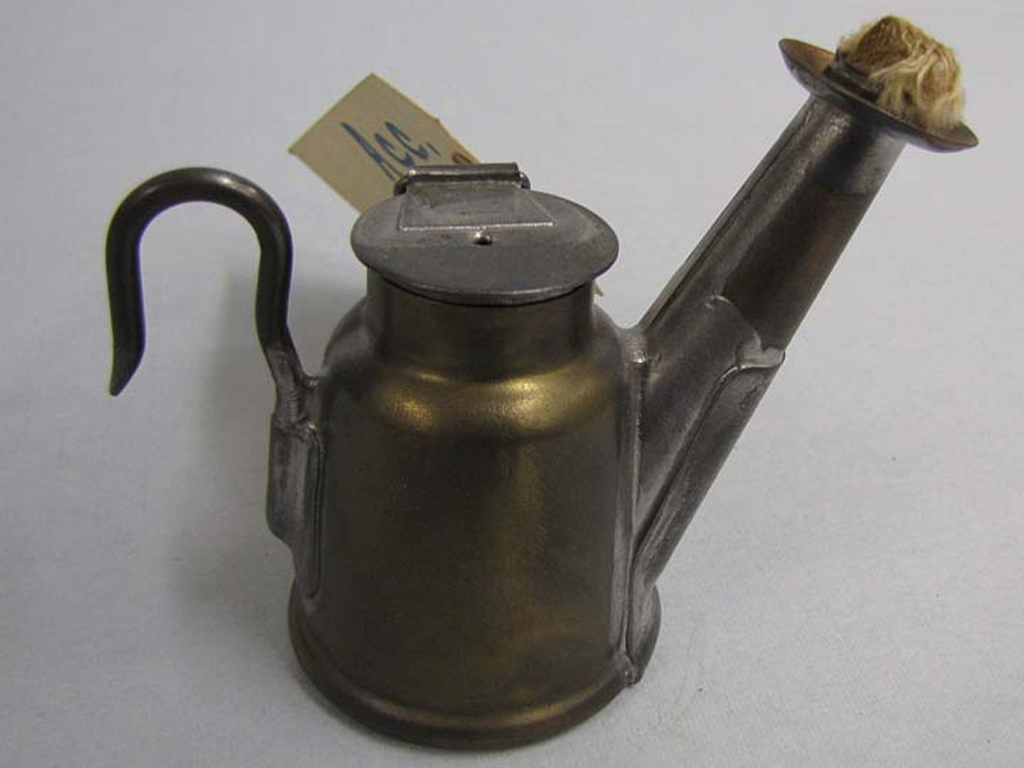This oil-wick lamp is a patent model constructed by W. G. Dowd of Scranton, Pennsylvania that received patent number 90,434, on May 25, 1869. The patent filing is for the wick raiser on this lamp seen on the outside of the spout.
- Description (Brief)
-
This oil-wick lamp is a patent model constructed by W. G. Dowd of Scranton, Pennsylvania that received patent number 90,434, on May 25, 1869. The patent filing is for the wick raiser on this lamp seen on the outside of the spout. Dowd claimed as his invention “a wire bent over the outer edge of the wicktube with its outer portion sliding in the guide, and its inner portion bent to form an eye to which are hung the fork,” so as to raise the wick by the sliding of the wire.
- Location
-
Currently not on view
- patent date
-
1869-05-25
- patentee
-
Dowd, W. G.
- ID Number
-
AG.MHI-MN-9744
- accession number
-
88881
- catalog number
-
MHI-MN-9744
- patent number
-
090434


